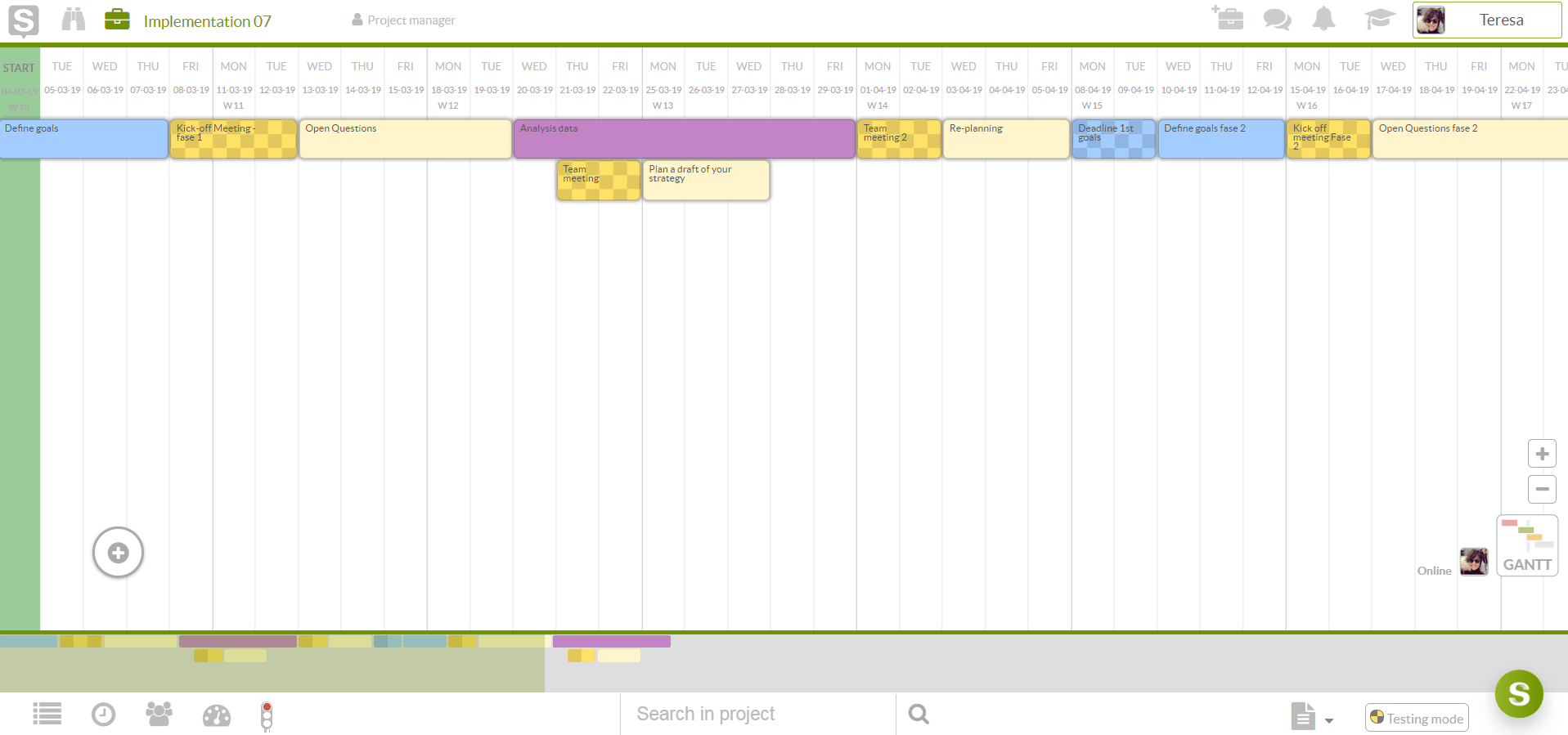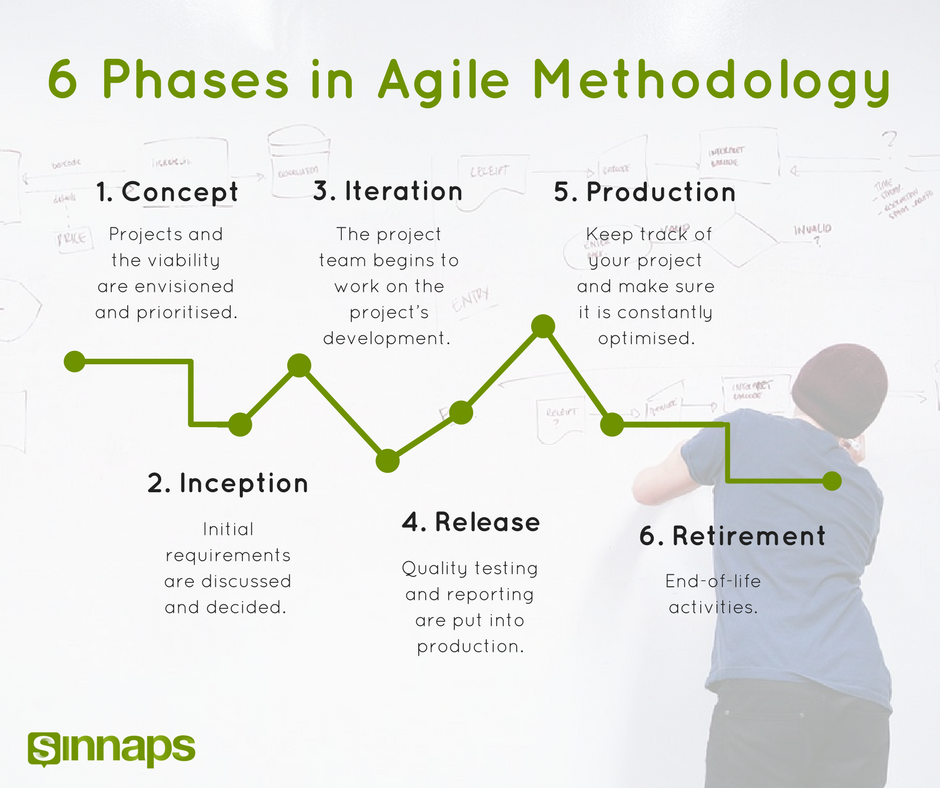As organizations and businesses embrace and adopt the Agile development workflow, they open their doors to unlimited possibilities as it entails meeting h ever changing, fast-paced needs of the customers today. This course of action provides the much-needed flexibility in handling projects by making room for the constant changes that occur in the course of delivering project deliverables to customers.
By cutting the rather lengthy requirements as well as build and test phases into smaller chunks of work, project managers can deliver projects even more frequently and successfully.

Innovative project managers do not simply stumble upon success; they work towards it, and achieve it by making use of requisite tools and procedures. And this is why small and medium scale businesses as well as organizations rely on Sinnaps online project management software as well as other Agile workflow automation software and collaboration tools in the likes of Asana, Wrike, etc., to ensure better allocation of project resources, timely scheduling of tasks, improve agile team collaboration and achieve round-the-clock monitoring of project progress.
Scrum Agile workflow, in the most basic terms consists of a cycle of events that captures the entirety of how work if performed and completed in a given period of time. From creating a product backlog which consists of a prioritized list of all product features as desired by the product owner, agile planning meeting where each item present on the list are discussed with the development team, tracking work status as well as a host of other activities carried out to see the product become a reality.
In this article, we will take a closer look at Agile scrum workflow, including the many sub progressions that take place in-between, eventually leading to a successful project endeavour.
Agile Workflow
To further elaborate on the agile project workflow diagram, each event in the Agile workflow cycle, (agile sprint/iteration) is considered the basic unit in Scrum. As a timeboxed event, it therefore restricts the duration of each meeting to periods of between one or two weeks. Take a look at this project management workflow software:

You will find more info about Agile management in organizations here.

Scrum Workflow
Scrum emphasises the development of a working product at the end of the project endeavour. It underscores the need to develop products that will add value to customers and strongly suggests that the product be fully tested, documented and potentially releasable.
Below, we shall consider cycle of events as would be contained in a scrum Agile workflow management system:
- Product backlog: consists of all essential features that should go in a product.
- Planning meeting: To discuss details of the product deliverables as well as estimate their sizes.
- Project monitoring: Use of cards and themes to track project status.
- Development cycle: Consists of building the product of the project, testing, collecting feedbacks and other activities tailored towards building an acceptable product.
- Project product: This constitutes the end of the project with the development and shipping of a complete product which should add value to the customer. If the product doesn’t meet the required value, it is reviewed in the next step.
- Review: This will include discussions to improve the product when revisited.
- Repeat procedures: After the product review, recommendations are made to ensure the development of a product which meets required value this time.
Example of Backlog in Sinnaps: dependencies between activities

Sprint Workflow
The first activity in a sprint workflow process is the sprint planning event. It is scheduled with the aim of determining the work for the sprint as well as estimate a forecast to serve as goals. To bring a sprint to a close, the project manager must carry out a sprint review and sprint retrospective to see progress made, as well as point out lessons for improving any subsequent sprint.
Below, we have a list of sprint workflow activities in Agile simplified workflow as well as what they entail:
- Sprint planning: This is held by the scrum team at the beginning of a sprint. Here, the scope of the project is worked out, product backlog items to be completed in a sprint are selected, a sprint backlog is prepared to capture the tasks needed to complete the above selected product backlog items.
- Daily Scrum: Held daily throughout the entire duration of a sprint. Each development team member answers questions such as: what did I complete yesterday? What do I plan to complete today? Are there any impediments that may stop me from achieving my goal?
- Sprint review: Here, the team looks at what was planned and compares against what was completed. Presents the same to stakeholders, collaborates with stakeholders on what to do next.
- Sprint retrospective: This is an avenue to reflect on past achievements and also identify and adopt an action plan for continuous improvement
- Product refinement: Checking product backlog items to ensure that they’re clearly described in a way that becomes easy for teams to execute.
Agile software development was born out of the frustration of the other traditional project management options. Built with the flexibility to accommodate changes and in general facilitate work on smaller bits of developmental and incremental stages as against completing all the work at once, agile workforce management brings a whole new feel to managing projects.
Besides, one-piece flow process manufacturing is the ideal solution to overcoming these challenges because it makes the process of manufacturing more effective and customer-oriented. You will find more info here: One-Piece Flow: Guard Against Wastage In Manufacturing.

